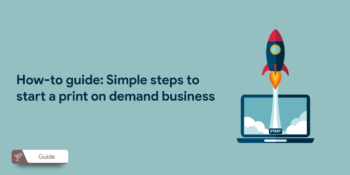Don’t you want to seize the chance presented by a crisis? Uncertainty is a hallmark of a recession, and intelligent people can always take advantage of these possibilities.
Even though it is difficult, it is still feasible to expand your Shopify business during a recession if you take the appropriate steps.
In this article, we’ve covered the recession risks you face as a Shopify merchant, how to mitigate those risks, and how to keep expanding your online store. Move along!
What to expect in a recession?
When there is a large fall in economic activity across the market, it is considered to be a recession and a contraction of the business cycle. It causes the growth of the gross domestic product to slow down.
The recession may be brought on by a variety of circumstances, including the collapse of an economic bubble, a shock to international commerce, a financial crisis, a natural disaster, etc.
Other contributing factors to the economic slump may include deregulation, rising interest rates, a decline in manufacturing orders, and a loss of confidence in investment and the economy.
What effects would a recession most likely have on consumer behavior?
Customer behavior is largely influenced by liquidity, or how much cash is available for purchases. One is more likely to spend when they have more money. There is a shortage of money during an economic downturn. The purchasing power of the customer will be impacted by this.
The majority of the time, consumers only alter the things they buy during recessions. They do not entirely stop making purchases. Spending is shifting from luxury items to everyday necessities. For instance, several shops that sold non-essential things had to close during the pandemic. However, the supermarket industry fared incredibly well, especially e-commerce businesses.
People will also search for discounts and better offers during these periods. And that explains why many, even after the pandemic faded, totally switched from offline to internet purchasing because the latter offered a lot of offers.
How to Grow Your Shopify Store During Recession?
Even though it’s challenging, taking the correct steps can help your Shopify business weather the economic downturn and even expand. You can dominate your market and distinguish yourself from your rivals.
Either growing sales or cutting costs is key in this situation. Or both. Below is a list we’ve put up to show you how to do that and what aspects you should pay attention to. Let’s verify!
1. Lower your overhead expenses
An opportunity to assess and lower overhead costs may arise during a recession. Long-term growth will benefit if you can find strategies to lower fixed costs.
To cut these costs, you could, for example, outsource a few particular jobs. For advertising, you can collaborate with a third-party agency, and for design work, you can hire independent contractors.
It might be less expensive than paying full-time workers to perform these duties. You won’t be paying a constantly fixed expense. Additionally, you only pay for these services as needed.
If you don’t want to pay for warehouse storage, a drop-shipping model for your Shopify business can be a fantastic alternative. There may be numerous concepts for various store types.
Making sure that any adjustments don’t degrade the caliber of your offerings is key in this situation. In other words, they shouldn’t have a detrimental impact on consumer satisfaction. That implies that before implementing these adjustments, you should consider where you can spend more or less.
2. To prevent a store recession, analyze the store data
The gold mine that you can utilize to comprehend and analyze the customer journey is the data from your Shopify store. With the help of this study, you can see where you should put your attention and money as well as where you need to make adjustments and put the correct tactics into place for your eCommerce site.
3. Examine Your Pricing Strategy To Gain An Advantage
Understanding your client’s willingness to pay is crucial to developing a price strategy. You may maximize your profitability with this method.
You must, of course, take into account additional aspects. You ought to be aware of your cost per sale.
To determine your price model, you need also to take taxes, shipping expenses, and all of your overheads into account. You may discontinue selling a certain unit if you determine that doing so will not be lucrative for your company.
Another significant fact is that during a recession, you can use various pricing structures for necessities and discretionary items. Inflation may have quite different effects on these two groups. For instance, since people will continue to buy the necessary goods, you can raise their pricing.
4. Increase the Promotions to Keep Things Interesting
The most important thing to remember in this situation is to use caution when increasing the number of promotions.
Therefore, we have a suggestion for you to make sure that increasing the number of promotions does not result in a drop in profit.
For things you sell less frequently, you can run more promotions, and for products, you sell more frequently with fewer promotions. By doing this, you can draw in more clients and boost your revenue.
5. Increase the Efficiency of Your Marketing Process
Cutting the marketing budget without a plan could hurt your Shopify business because recessions can be excellent times to boost brand recognition.
By enhancing your brand’s value proposition with the appropriate marketing approach, you should establish a relationship with your customers. It is essential because it will lessen how the recession impacts your eCommerce firm.
On the other side, if you believe that cutting the marketing budget would be beneficial for your company, here are some suggestions to help your Shopify business adapt:
A. Provide your audience with relevant stuff.
You can start a blog where you respond to inquiries from your clients. When compared to paid advertisements, this tactic is incredibly cost-effective and can have a remarkable impact on your SEO. Therefore, using high-quality content will greatly simplify the process of acquiring customers. It takes time and consistent work, though, and is a long-term process.
B. Improve your paid advertising
Make sure you get more out of the campaigns than you put into them. Make sure you promote for the appropriate keywords by paying close attention to the procedure. Find the appropriate search terms that your clients are using to find your product or service if the keywords you are using for the ads are not effective.
C. Depending on various traffic sources
It’s dangerous to rely solely on one source since you run the risk of losing your traffic resource if circumstances change. Consequently, you want to have a variety of lead-generating traffic sources. To put it another way, if you can, you should combine your PPC, content marketing, SEO, influencer marketing, and referral marketing methods.
6. Boost Your Shopify Store’s Customer Retention Rate
During a recession, improving client retention can save your Shopify company. Because there are fewer consumers during a recession, you need to use various tactics and incentives to retain the ones you do have. You can sell more products and boost your profit if you can extend the lifetime value of each customer.
Bottomline
As we said above, many Shopify merchants may find opportunities in the uncertainty that came with the recession.
By making some expense reductions, improving your marketing tactics, possibly revising your pricing plan, and adopting other steps that we highlighted in the post, you can still expand your Shopify business even in a downturn.
We wish you luck in choosing the best tactics to expand your Shopify store, reduce the dangers of a recession, and do so!










No Comments
Leave a comment Cancel